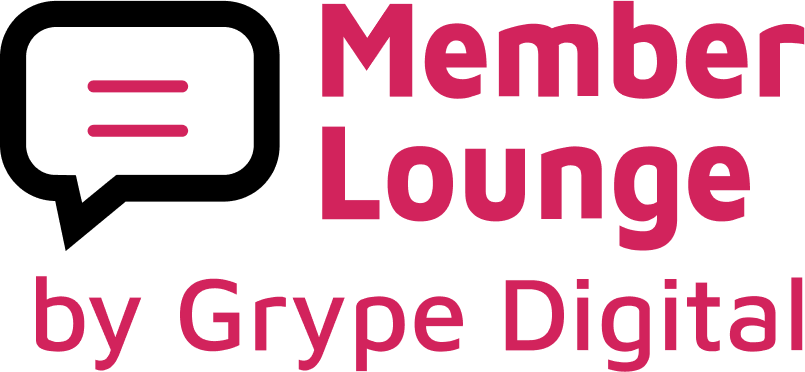We all try our best to properly scope our web development projects and establish a timeline and budget, but with the large scale of membership sites that associations build, it is hard to predict every outcome and still be true to the original plans which is why we carry out a risk assessment. Do we doom ourselves to constant disappointment, anxiety, and exceeding our budget?”
All membership site projects come with risks. Now, “risk” comes with its negative connotations but not all risks are negative. Some unexpected events or conditions can help our project. When this happens, we call it a blessing… but with our risk assessment, we handle all uncertainty with seriousness!
Even with risk mitigation in place, there is no predictable path for a complex membership site build. The uniqueness of each association, their membership, and how they deliver their member benefits makes each member portal build uncharted territory. What may seem like a simple task can be the hardest to implement. Murphy’s law states that anything that can go wrong, will go wrong. “Setting pessimism aside, adopting this mentality allows us to proactively prepare for any hiccups and be ready to pivot.”
This process does not happen in a vacuum. Utilizing the team is key in figuring out the chances of a risk occurring, and furthermore for calculating the potential cost if it were to occur.
Risk Management Assessment
When preparing the scope of our membership site build project, we need to take a full risk assessment. With some planning and forethought, we can identify any roadblocks up ahead and mentally prepare for the ones that will surprise us!
Risk Identification: Are We Having Fun Yet?
Identifying risks is a process of combining experience, best practice, and creativity. The entire team should actively engage in this. On the creative side of things, make time for brainstorming sessions with your team where you ask everyone to create a list of what could go wrong at any stage in the project. The value of each team member’s input lies in the fact that it reduces the potential for something to be missed or lost in the process when there are more ideas. Use common risk checklists during your brainstorming sessions to generate more ideas.
Types of Risk
The group identified risks by category. We often draw these risks from our experience in past projects, current workflows, and interactions with team members. The development project managers and dev team will use these groupings to plan for potential risks with their current projects. Some suggestions for risk groupings could be technical, cost, schedule, stakeholders, staffing issues, and complications.
Finally, you can develop a risk breakdown structure (RBS) by using a framework like the work breakdown structure (WBS). At this level of detail, we turn to spreadsheets with increased levels of detail. The sorting process results in a clearer understanding of where risks are concentrated, enabling us to plan the various stages of the project.
Risk Evaluation: Setting Priorities
The brainstorming sessions have concluded, and we have heard from every team member. Now, a list of all probable and possible risks is sitting in front of us. We are at the risk evaluation stage, where we prioritize where to put our energy. Every risk and consequence is not created equal. Identify which events are more likely to occur, and figure out what the overall cost of each risk could be. Once this is done, narrow it down to critical risks, ie. something that could seriously harm your project. For instance, if the risk could increase your project costs by 5%, this could be a critical issue moving forward. Spending effort and focus on these risks should be a top priority moving forward.
Risk Mitigation
We know the risks, and now it’s time for the project team to create their risk mitigation plan. There are four basic ways to handle risk and reduce its impact on your project.
- Avoid:
The best thing you can do is to avoid the risk completely. If it never happens, it can’t hurt your project. Be warned: even when we think we are taking this path, there will be risks!
- Mitigate:
Accepting that risk will happen, we attempt to mitigate it. This involves taking action that will cause the risk to do as little damage to your project as possible. This may seem obvious, but to truly mitigate the risk is to plan for it.
- Transfer:
Another effective way of dealing with risk is to pay someone else to accept the risk for you. Commonly, insurance is used to transfer risk from one person or organization to another.
- Accept: We’ve looked at all our options, and we can’t avoid, mitigate, or transfer the risk to another organization. Unfortunately, sometimes the risk is completely unavoidable.
Contingency Plan Budget
We have assessed the risks and put a plan in place, but for safety, it’s always a good idea to take one step further. Plan B is really important. The project team will often create a backup method for accomplishing goals called a contingency plan. It is only realistic to set aside funds to address the eventuality that a project’s costs will increase. High-risk projects require a larger contingency budget, while low-risk ones may be easier to squirrel away. During the budgeting process, project budgets typically allocate these funds as a one-line item. Some project managers use the one-line option, while others stray towards individual budgets for high-risk items, allocating each line its own contingency budget.
Success Starts with a Plan
In the end, you get a risk mitigation plan that will create a more realistic roadmap for your project with a buffer against the problems that any project can face. Unpreparedness in most cases leads to potential damage that exceeds affordable limits. This often occurs despite the enjoyment derived from jumping into the design and implementation process.
Conclusion
In conclusion, optimizing your membership website is a crucial step towards fostering stronger member engagement and ensuring a seamless user experience. Embracing a comprehensive strategy that encompasses user feedback, intuitive design, and compelling content can elevate your association’s online presence.
Member Lounge serves as an invaluable tool in this endeavor, offering a user-friendly interface, customizable features, and robust community-building tools. With its ability to streamline membership management, enhance content presentation, and facilitate easy member interactions, Member Lounge acts as a supportive partner in your website improvement project, empowering your association to create an engaging and thriving online hub for members.





